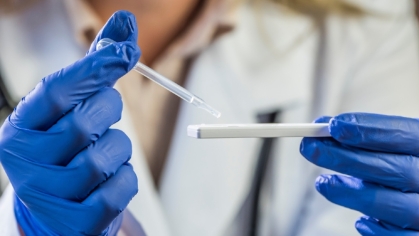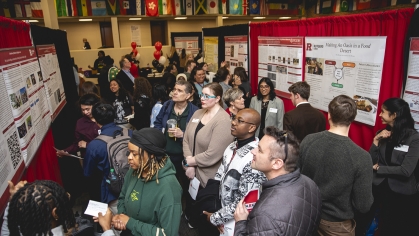Lecturer Earns Andrew W. Mellon Foundation Native American Scholars Initiative Predoctoral Fellowship
Among the time-honored lessons that Anabelle Rodriguez imparts to her students is the need to give themselves the chance to enjoy the process of learning, even when it becomes challenging – and especially when it pushes them out of their comfort zones.
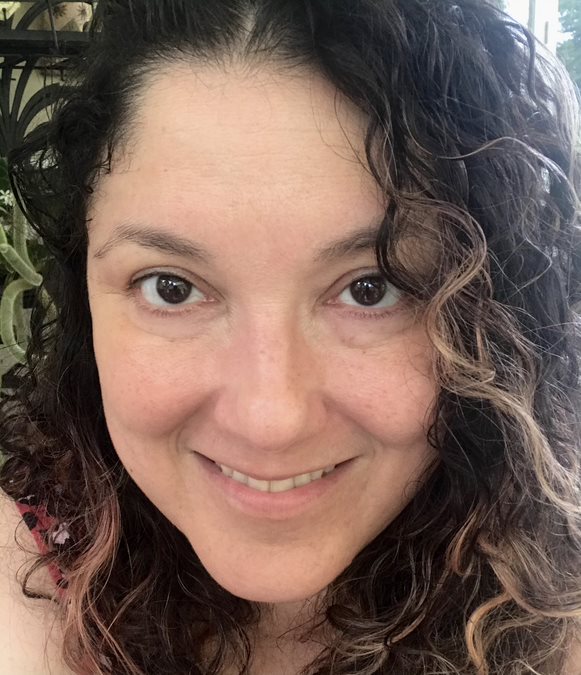
Anabelle Rodriguez
“The best advice that I can offer my students: travel, travel, travel – see new sights, hear new sounds, try new flavors, and expand your perception through new experiences,” says the part-time lecturer of art history at Rutgers University–Camden and Rutgers University–New Brunswick.
It is this penchant “to be bold enough to try new things, and to create, move, and explore as much as possible” that has now earned the Ph.D. candidate in art history at Rutgers–New Brunswick the Andrew W. Mellon Foundation Native American Scholars Initiative Predoctoral Fellowship at the American Philosophical Society’s (APS) Library and Museum. The fellowship, which is open to scholars at all stages of their careers, seeks to fund and promote scholarship related to Indigenous cultures and languages.
Rodriguez says that earning the fellowship is an exciting and humbling experience all at once, noting that the opportunity to immerse herself in research in a world-renowned, advanced research institution that was founded by none other than Benjamin Franklin is special in and of itself.
“Franklin is one of my favorite polymaths,” says the Philadelphia resident. “In a practical sense, this fellowship will allow me to complete my dissertation and to start thinking about the book that I hope it will evolve into.”
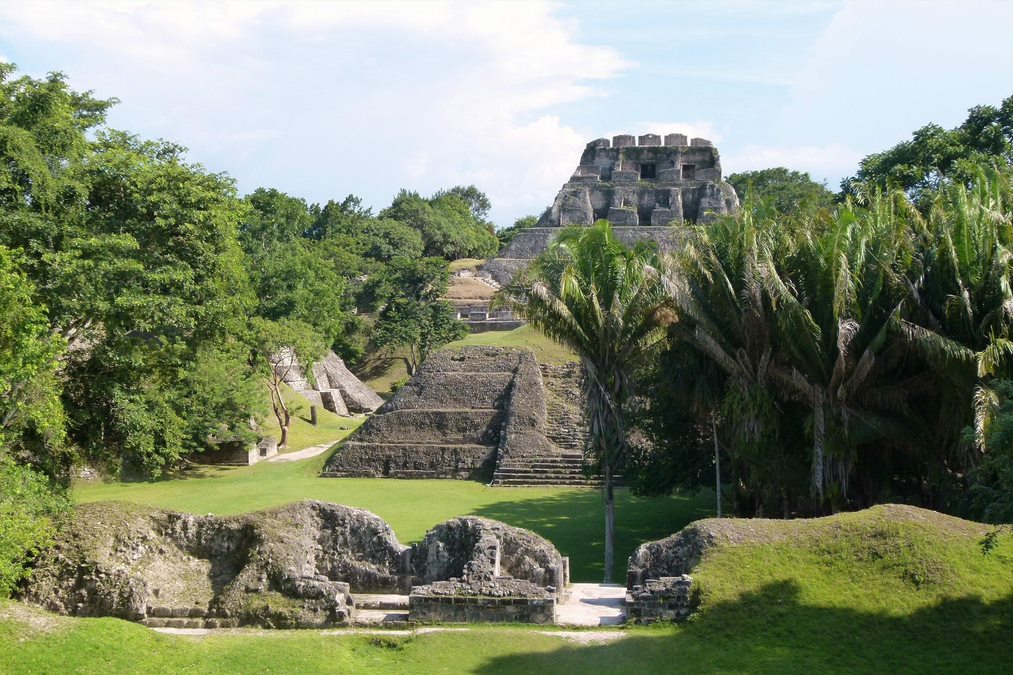
Xunantunich, an Ancient Maya archaeological site in western Belize
This will actually be the Rutgers lecturer’s second residency at the American Philosophical Society, having completed a short-term library research fellowship at the APS Research Library last year.
Rodriguez will serve her latest fellowship as a residency at the American Philosophical Society beginning in August. Her scholarship will inform the development of a formal and iconographic analysis of the remaining fragments of a sculptured stucco frieze that encircled El Castillo, the largest pyramidal structure at the Maya archeological site of Xunantunich.
“It will also give me the chance to delve into a significant number of rare publications focused on Maya ethnography and Mesoamerican archaeology,” she explains.
This work follows the fieldwork that Rodriguez carried out in Belize collecting oral histories related to the preservation and consolidation of Maya monumental architecture at Xunantunich. It will also complement the fieldtrips she made to other Maya archaeological sites throughout Belize, Mexico, and Guatemala, to study their architecture and iconography in comparison with that at Xunantunich.
“The privilege of pursuing a multi-year research project focused on cultural-natural preservation that considers the contributions of local Indigenous agents to the conservation of Maya archaeological heritage means that I find great value in their individual and collective experiences,” says Rodriguez, who identifies as a scholar from Puerto Rico with Indigenous, African, and European roots. “It also means I consider their contributions to be a vital part of the modern history of Maya cultural heritage preservation at Xunantunich, the most visited archaeological site in Belize in recent pre-COVID-19 years.”
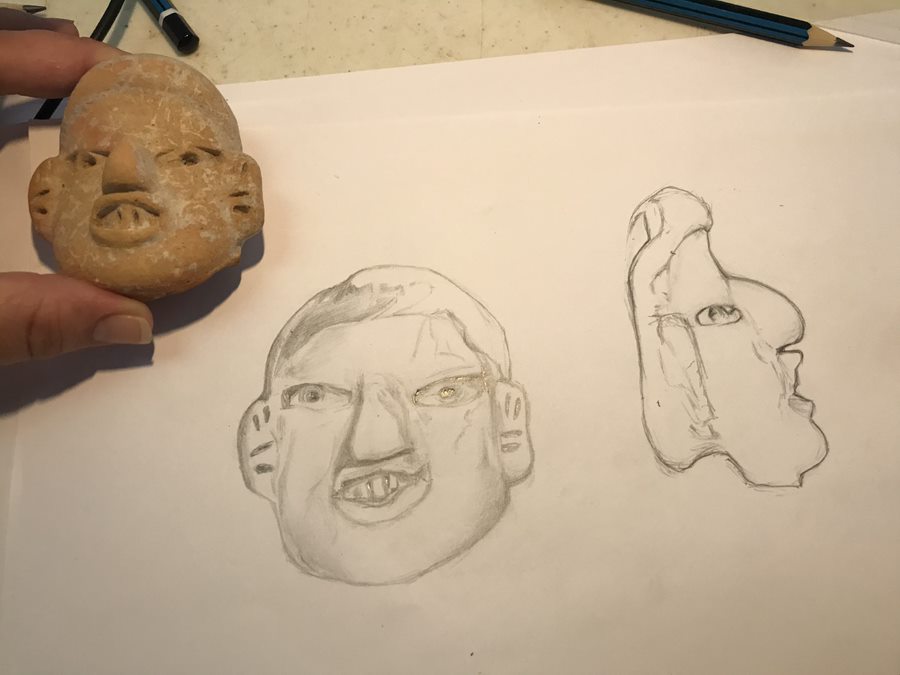
Rodriguez draws ceramic figurines at the Cahal Pech lab during the 2018 field season.
In addition to her research, Rodriguez is currently serving as a member of the editorial team for an upcoming publication for the U.S. National Committee of the International Council of Monuments and Sites (US/ICOMOS) that brings together the perspectives of internationally renowned preservationists titled Forward Together.
On the curatorial front, she just started developing a proposal for an exhibition to commemorate the 30th anniversary of the Organization of Puerto Rican Artists, in 2023.
“All of these activities complement my work at Rutgers University, since they revolve around research, my curatorial practice, and the production of new scholarship,” she says.
As a curator, Rodriguez has also had the opportunity to develop, co-curate, and stage an exhibition, titled “Isla del Burén: The Taíno and their Predecessors in Puerto Rico,” dedicated to the Pre-Columbian archaeology of Puerto Rico. She now uses the catalog publication in her Rutgers-Camden course “Art of the Americas.”
Rodriguez earned bachelor’s degrees in visual arts and history of art and architecture from Brown University in 1994, and a master’s degree in visual anthropology from Temple University in 2014. She plans to defend her doctoral dissertation at Rutgers-New Brunswick in 2022.
